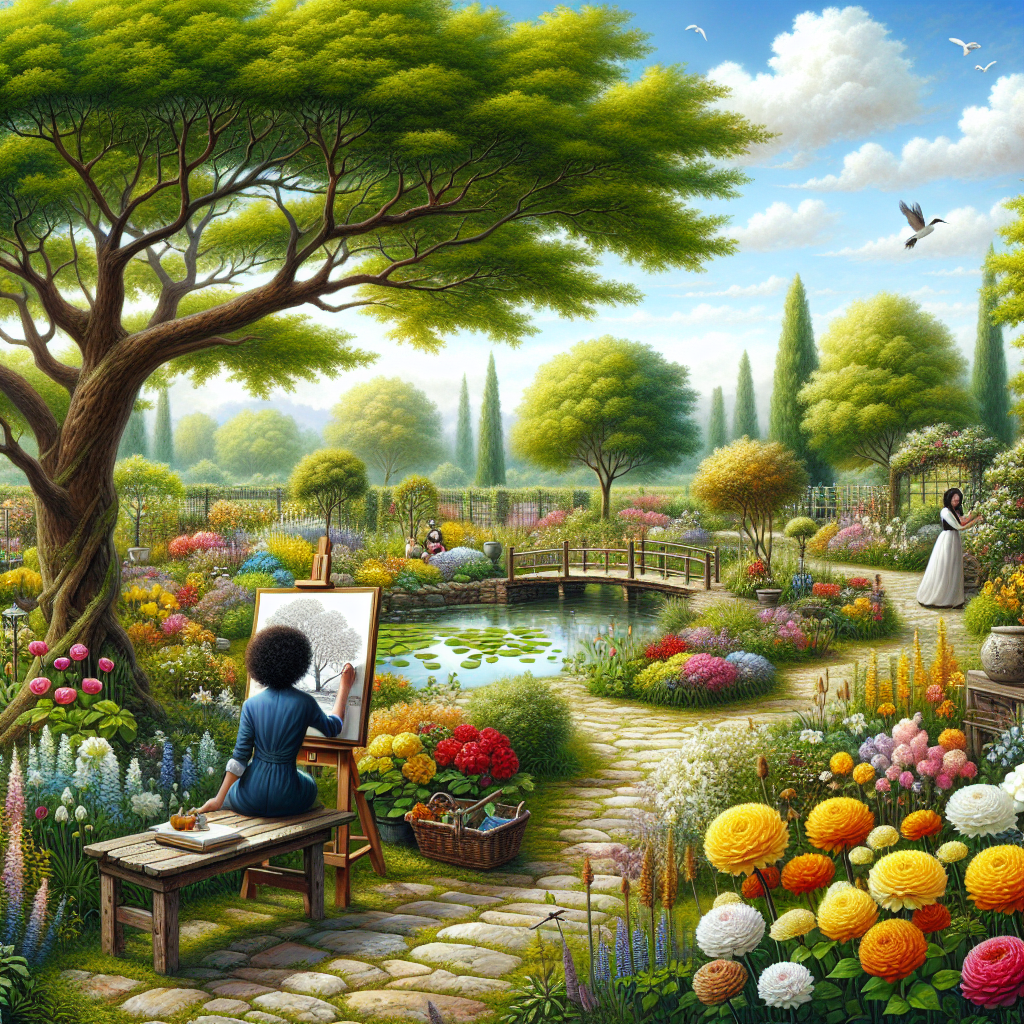Designing Your Garden Landscape: Creative Ideas
Creating a picturesque garden landscape is an art form that intertwines nature and creativity. A well-designed garden can serve as a tranquil retreat, a vibrant play area, or even a commanding centerpiece that reflects your personal style. In this guide, we’ll explore creative ideas to help you design your garden space, regardless of size or budget.
Understand Your Space
Before you begin, it’s important to understand the dimensions, orientation, soil type, and climate of your garden. A sun map can help determine how sunlight travels across your space, influencing plant choices and placement. Begin with a sketch, and then consider using a garden planning app to help visualize the final outcome. The Old Farmer's Almanac (almanac.com) offers tremendous insight into planting times and plant choices based on your specific region.
Choose a Theme
Selecting a central theme can give your garden design direction and cohesion. Whether you’re drawn to a Japanese Zen garden, a Mediterranean oasis, or a rustic cottage style, your theme will guide your plant selection, hardscape materials, and decorative elements. Websites like Houzz (houzz.com) can be a rich source of inspiration for choosing the right theme.
Create Privacy with Plants
Privacy is a coveted feature in any garden. Tall shrubs like arborvitae or bamboo can serve as natural screens. Fast-growing vines on trellises offer a dual benefit of privacy and vertical interest. Hedges can also double as windbreaks and sound barriers. For more information on plant growth and care, the Royal Horticultural Society (rhs.org.uk) is a valuable resource.
Incorporate Varied Texture
A blend of plant textures adds depth and contrast. Pair the fine foliage of ornamental grasses with the broad leaves of hostas or the delicate fronds of ferns. The juxtaposition of textures can turn a simple planting scheme into a visually rich tapestry.
Play with Color
Color schemes can dramatically alter the mood of a garden. Use cool colors like blues and purples for a soothing effect or warm colors like oranges and yellows for an energizing atmosphere. Remember, green is also a color; varying shades of foliage can themselves create a beautiful palette.
Integrate Hardscape Elements
Hardscape elements, such as pathways, retaining walls, and patios, are the bones of your garden design. These should blend seamlessly with the living components. Natural stone, recycled materials, or even industrial elements can add character. Do consider the flow of movement in your design – meandering paths can offer a sense of exploration, while a direct route is practical and bold.
Water Features
A water feature can be a focal point that adds a sense of calm through its sight and sound. From a simple birdbath to an elaborate pond, water elements attract wildlife and provide a dynamic aspect to your landscape. Beginners might appreciate ready-to-install options like those available at Gardeners Supply Company (gardeners.com).
Attract Wildlife
Encouraging wildlife into your garden can enhance its vibrancy and ecological value. Native plants are best for attracting local insects and birds. Consider adding a bird feeder or a pollinator garden to invite these visitors. Education on local fauna can be furthered through organizations such as the National Wildlife Federation (nwf.org).
Utilize Containers
Not all garden spaces allow for extensive planting in the ground. Containers can offer flexibility and visual interest. They can be filled with annuals for seasonal color or perennials for a more permanent arrangement. Experiment with various container sizes and styles to suit your garden theme.
Lighting for Evening Ambiance
Garden spaces are not just for daylight enjoyment. Subtle outdoor lighting can enhance your landscape’s beauty at night while providing safety. Solar-powered lights are an energy-efficient option that can outline pathways or highlight special plants and structures.
Sustainable Practices
Sustainability is more than a trend; it’s a responsible way to garden. Consider composting, collecting rainwater for irrigation, and choosing drought-resistant plants. By adopting sustainable gardening practices, you contribute positively to the local ecosystem and reduce maintenance costs.
Don’t Forget the Seasons
Remember that your garden is an ever-changing entity. What looks stunning in spring might be barren in winter. Choose plants that offer seasonal interest—spring bulbs, summer blooms, fall foliage, and even structural interest in winter, like ornamental grasses or the stark frames of deciduous shrubs.
In conclusion, designing your garden is a highly personal and gratifying process. These creative ideas can guide you in crafting a delightful outdoor space that reflects your tastes, supports local wildlife, and provides year-round enjoyment. Patience and experimentation are key—garden landscapes evolve over time, and with each season, there’s opportunity for growth and innovation.
Whether it’s a quaint butterfly garden or a grand outdoor living room, your landscape can become a sanctuary and a testament to your vision. Remember, the most important aspect of garden design is that it brings you joy and connects you to the natural world. Happy gardening!

